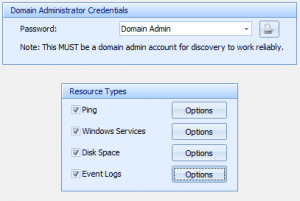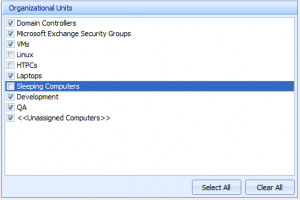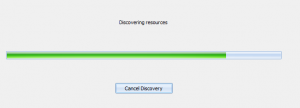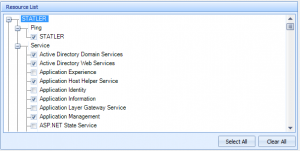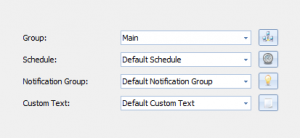SQL Express Database Size Limit Notification
Recently a customer needed to monitor MSSQL 2008 R2 Express database sizes and be notified when the size grew too large. It is quite easy to monitor SQL Express database size with Overseer Network Monitor’s Database monitoring capabilities.
As you may know, SQL Express 2008R2 is limited to 10GB databases. Older versions, such as SQL Express 2005 and 2008(R1) were limited to only 4GB. This customer needed to be notified when certain databases hit 80% of their allowed size, so they could run an archival process to keep the database size under the database size limit for SQL 2008 Express R2. To do this, we setup a DB Query resource like this for each database that needed monitoring:
We used this SQL query:
SELECT (SUM(used_pages)*8192)/1024 FROM sys.allocation_units
This gets the size of the data+indexes in the current MSSQL Database. We then setup a simple scalar result evaluator to notify if this value exceeded 8,388,608(8GB). Now, whenever the database size grows large, the customer will receive Emails letting him know to run his archival process.
Resource Discovery Wizard
The resource discovery wizard allows you to discover resources on your network so you don’t have to manually enter all your resources into Overseer. This wizard does require your computers to be a member of a Windows domain/active directory. It also requires a domain admin password to be used to setup the resources. This is generally the architecture most Overseer customers already use, so this shouldn’t be a significant limiting factor for most.
To run the resource discovery wizard, simply select the option under Tools, and follow the instructions:
First, you must specify a domain admin account for discovery to work reliably. You can then select the different resource types you want selected. Click the ‘Options’ button to specify resource-type-specific options.
Next, you can specify the Organizational Units(OU’s) in your domain that you’d like to discover for. This can help limit the scope of your discovery to just servers, just user’s workstations, etc. If you don’t have OU’s setup, you may see just “<<Unassigned Computers>>”– which includes all domain computers not otherwise assigned to an OU.
Next, you simply wait for discovery to complete. Overseer may take a while to connect to all computers and discover all their resources. If you have computers that are powered down in OU’s you’ve decided to discover, this may take even longer. Fortunately, Overseer discovers resources on multiple computers at once during this process.
On the next screen, pick the resources you’d like Overseer to monitor. By default, Overseer will check all the services that are in running state, all event logs, all disks, and all ping resources. This may be overkill for a good monitoring strategy– so you may want to go through and uncheck some services, if you know which ones do not need monitoring.
Next, specify the resource group, schedule, notification group, and custom text. If you’re not sure, the defaults will probably work.
Lastly, you simply let Overseer create your resources. Once that’s done, click ‘Finish’ and you should have many resources configured for you in Overseer.
Categories:
- How To (28)
- Known Issues (5)
- New Features (36)
- News about Overseer Network Monitor (3)
- Tips and Tricks (55)
- Using the Software (51)
- Windows Monitoring (9)

